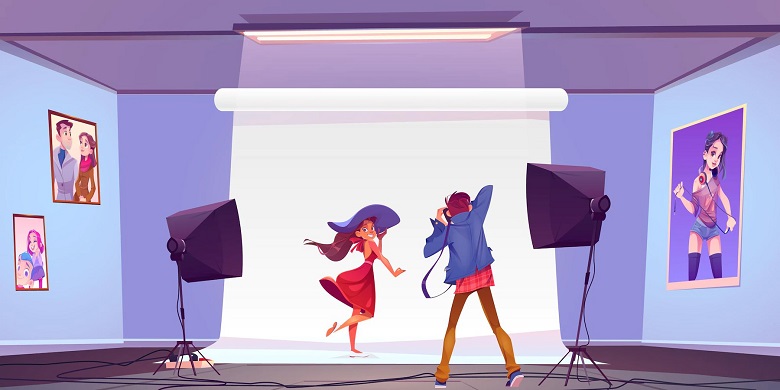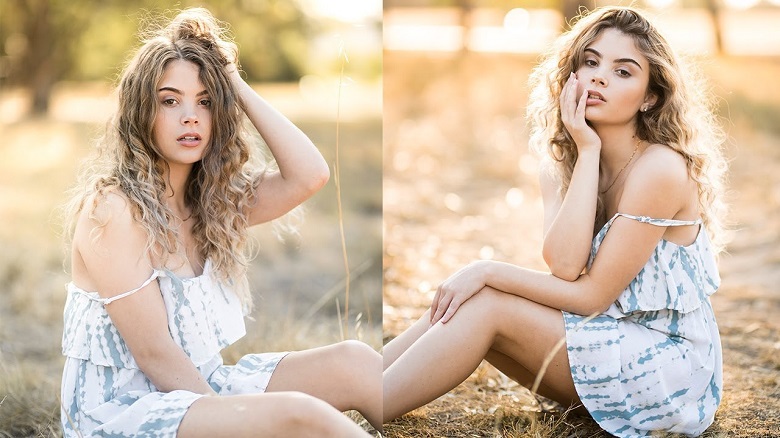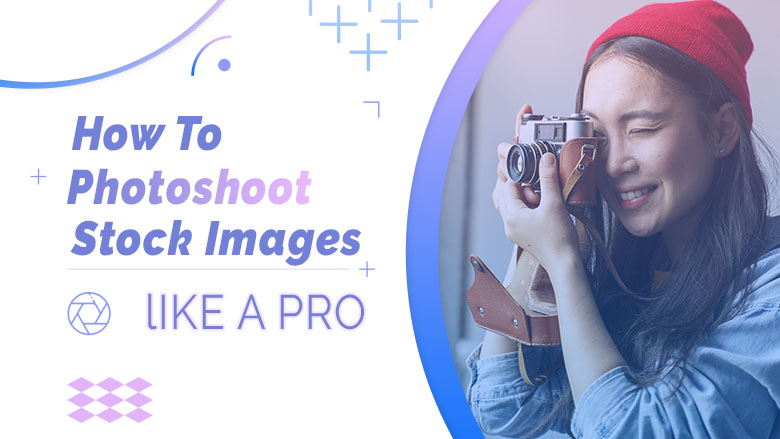Shooting stock images, like any creative pursuit, requires practice and patience to master. As such, it’s not unusual to hear of people spending hundreds if not thousands of dollars on classes before they even get started shooting stock images as a profession. But you don’t need to spend on that kind of paid course, because this article will help you to start shooting stock images like a pro.
Stock Photography
Stock photography is a general term used for images that are used repeatedly. These stock images can be sold on stock photo agencies like Shutterstock and iStockphoto, or used on websites or blogs for advertising purposes. Many people use stock photos when they want an image of something specific but don’t have time to take their own picture. Others may just want a professional-looking image but don’t have access to a photographer.
Also Read This: Launching Listings: The Right Number of Etsy Listings to Begin With
Types of Stock Image Licenses
Stock images can make your content pop, but if you don’t license them correctly, you could be in violation of the law and risk getting sued. There are plenty of options out there, so read on to learn about the three main types of stock image licenses.
Creative Commons
These licenses allow you to copy, distribute, display, and perform a work—under specific conditions. The most common Creative Commons license is Attribution-ShareAlike 4.0 International (CC BY-SA 4.0), which lets you remix or transform a work as long as you credit its author and license your new creation under similar terms (also known as copyleft). These rights are only available for commercial use if they’re relicensed with a NoDerivatives.
2) Royalty Free
If you plan on using your image for anything other than a personal project, then you might want to invest in Royalty Free images. This type of license allows you to use it commercially without paying any extra fees. All you have to do is credit and link back to where you found it. So if you’re looking for an image that can be used on your website or in marketing materials, Royalty Free is probably best. There are several different types of licenses within Royalty Free, so make sure you know what you’re getting into before you pay for one.
3) Rights Managed
For most businesses, and especially those looking to resell stock photos, rights-managed is a better choice. When you purchase an image with a rights-managed license, you own that photo forever. You can use it for as long as you’d like and distribute it however you want in print or digital form without worrying about getting into legal trouble with its creator. The downside of buying rights-managed images is that they can be pricey compared to other licenses.
Also Read This: Use This OKRU Downloader to Save Videos from OKRU in Just 3 Steps
How to photoshoot stock images (Some precious tips for beginners)
[caption id="attachment_32111" align="alignnone" width="780"] How to photoshoot stock images (Some precious tips for beginners)[/caption]
How to photoshoot stock images (Some precious tips for beginners)[/caption]
As a beginner it can be hard to get started on stock images photoshoot but following are some precious tips you can do in order to make your photos look more professional and therefore increase your chances of getting the sales you want.
Prepare your equipment
In order to photoshoot stock images, you need high-quality lenses, a DSLR camera, a tripod and some essential accessories like filters. Your equipment will cost between $1,000 and $3,000 depending on your choice of camera and lens. You can get by with cheaper gear if you really want to, but I don’t recommend it. If you have a smartphone, consider investing in an external flash or reflector kit. They aren’t expensive and they make a huge difference in your final shots. Also make sure that your batteries are fully charged before leaving home. If possible bring extra batteries too.
Choose the right place and time
Make sure to pick a location that has natural light coming in—like an open garage door or large window. Also, try to schedule your shoot when it’s light out. While you may have no control over what time of day you’re able to take your images, doing so in full sunlight will make your life easier in post-production because you can easily remove and reduce shadows. If possible, shoot at times of day when there are fewer people on the street; otherwise, you might find yourself trying to photoshop out tourists.
You want your model(s) to be comfortable
A great way to photoshoot stock images as a beginner is by setting up chairs in front of where you plan on shooting. Having something for them to sit on makes them feel more relaxed, especially if they need some extra time between shots. It’s also important to have a place for them to change into different outfits. If possible, give your model(s) an area that’s separate from where you set up your lights and camera gear so they can get changed without feeling self-conscious about being watched.
Adhere to any local laws or restrictions
In most places it’s illegal (or at least frowned upon) to shoot people without their permission—even if it’s just in public spaces like parks or streets. Make sure you know what you can and can’t do before you start shooting, and always ask your model(s) for consent before taking pictures of them. This is especially important if you plan on posting your images online; even something as seemingly harmless as sharing a photo of someone on Facebook could land you in hot water. If there are specific locations where you want to take photos but aren’t allowed, try scouting out alternative spots that have similar lighting conditions and backgrounds.
Take a lot of photos
There’s only one way to become a good photographer, and that’s to take lots of photos. Practice makes perfect, and there’s no substitute for experience. As you build your portfolio of images, you’ll learn what works and what doesn’t in terms of composition, editing and other techniques. Even when you think you have everything figured out, it never hurts to experiment with new lighting or angles. The more pictures you take, the better your chances are of capturing an image that will sell.
Work with natural light
[caption id="attachment_32120" align="alignnone" width="780"] Work with natural light - photography[/caption]
Work with natural light - photography[/caption]
Many people believe that professional photography is synonymous with expensive equipment, but that’s simply not true. One of the greatest myths about stock photography is that you need to use expensive cameras and lenses in order to create quality images. But it’s simply not true. Your smartphone can actually do a better job than any camera on your laptop if you learn how to use natural light effectively. You don’t even need an external flash; learning how to capture great photos in natural light will take your freelance business to the next level.
Don’t move too much between each shot
When you’re first starting out to photoshoot stock images, it can be hard to get used to having your subject hold their pose between each shot. This is particularly true if they’re getting tired and don’t feel like holding their pose anymore! Try to make things as easy on them as possible by shooting as quickly as you can without rushing through. As you gain more experience and practice, your subject will get used to keeping still between shots, making your job easier. The most important thing is that you’re capturing what you want in one take so that there are no oops.
Consider using multiple flashes
While artificial lighting isn’t always necessary (and often doesn’t look as good), it can be helpful when trying to eliminate shadows and dark spots in certain situations—particularly when working with a large group of people or objects with different textures. If you have access to an assistant, they can hold additional lights at appropriate angles while you snap away. If not, there are plenty of portable flash units on the market that will help you get your desired effect.
Wait for the golden hour before taking photos
It may sound like an obvious tip, but sunrise and sunset are great times to photograph—especially if you’re looking to photograph natural scenes. Natural light at these times casts very flattering shadows and can make your subject pop. You don’t need any additional equipment—just watch for clear skies in the days leading up to your shoot. You should also pay attention to weather forecasts so that you aren’t caught off guard by unexpected storms or heavy cloud cover.
Edit like crazy, but with class
Take time to pore over every single shot you take. There’s no one rule to determine if an image is stock-worthy or not, but try to ask yourself: Does it create interest? Is it unique? Is it special? If you’re satisfied with your images and you can answer yes to all three questions, then submit them! After that, make sure to edit your photos professionally—you don’t want any distracting background elements in your shots, so keep that in mind when shooting. And remember that quality is more important than quantity; while you may want to upload as many shots as possible, having fewer images on hand will increase their value.
Also Read This: Does Linkedin Pay Content Creators in 2023
Essential things to consider during stock images photoshoot as a begging
[caption id="attachment_32113" align="alignnone" width="780"] Essential things to consider during stock images photoshoot as a begging[/caption]
Essential things to consider during stock images photoshoot as a begging[/caption]
Your first stock images photoshoot as a beginner will probably be the most challenging one you’ll ever have to do, not just because you’re an amateur and your equipment won’t be as good, but also because there are some things that you should avoid doing. They may sound obvious to professionals, but we sometimes forget them due to being focused on our work and wanting to get the perfect shot.
Overthinking everything
Before you hit record, take a few minutes to do nothing. Clear your mind, don’t think about what you’re going to say or how you’re going to act. That way, when it comes time for shooting, all that will come out of you naturally. (There is a certain magic in just being yourself.) Don’t worry if you have to stop and start again – sometimes it takes a while before someone feels comfortable enough to be themselves on camera. The more natural you are, though, the better your video will turn out!
Letting the pressure get to you
Although it’s always great to have a goal, don’t place too much pressure on yourself. The last thing you want is for someone else’s expectations of you to make you more nervous than you already are. Instead, try your best, and if that doesn’t work out, try again. You are not defined by a single photoshoot—or any one goal for that matter. Just be happy with what you produce, and remember that there is always room for improvement!
Not knowing your camera settings
Before you step in front of that camera, make sure you know how to work it. It’s not just a simple point-and-shoot camera anymore. Digital SLRs and mirror less cameras have so many settings that knowing how to utilize them can make a huge difference in your pictures. Learn how to set shutter speed, aperture, ISO and white balance (just for starters) before setting foot on a photo shoot.
Conclusion
Stock photography isn’t as hard as it may seem. But, it does take time and experience to get great at it. To build up your own business though, you need to work hard, learn from your mistakes and go through several trial-and-error processes before you start seeing high volume sales in your bank account. With that being said, try learning how to shoot stock photos with just a smart phone and do not spend money on expensive equipment until you feel comfortable enough with shooting, editing & selling.














